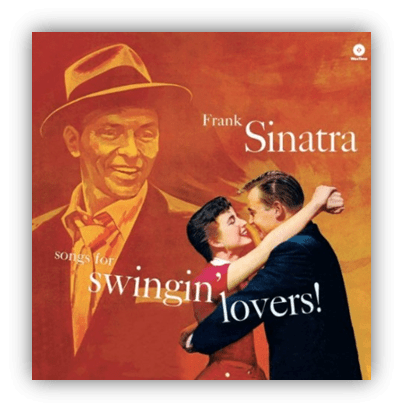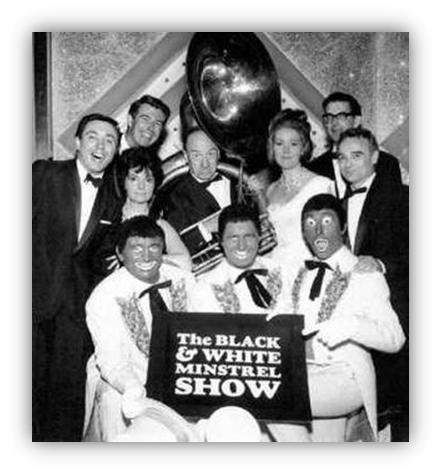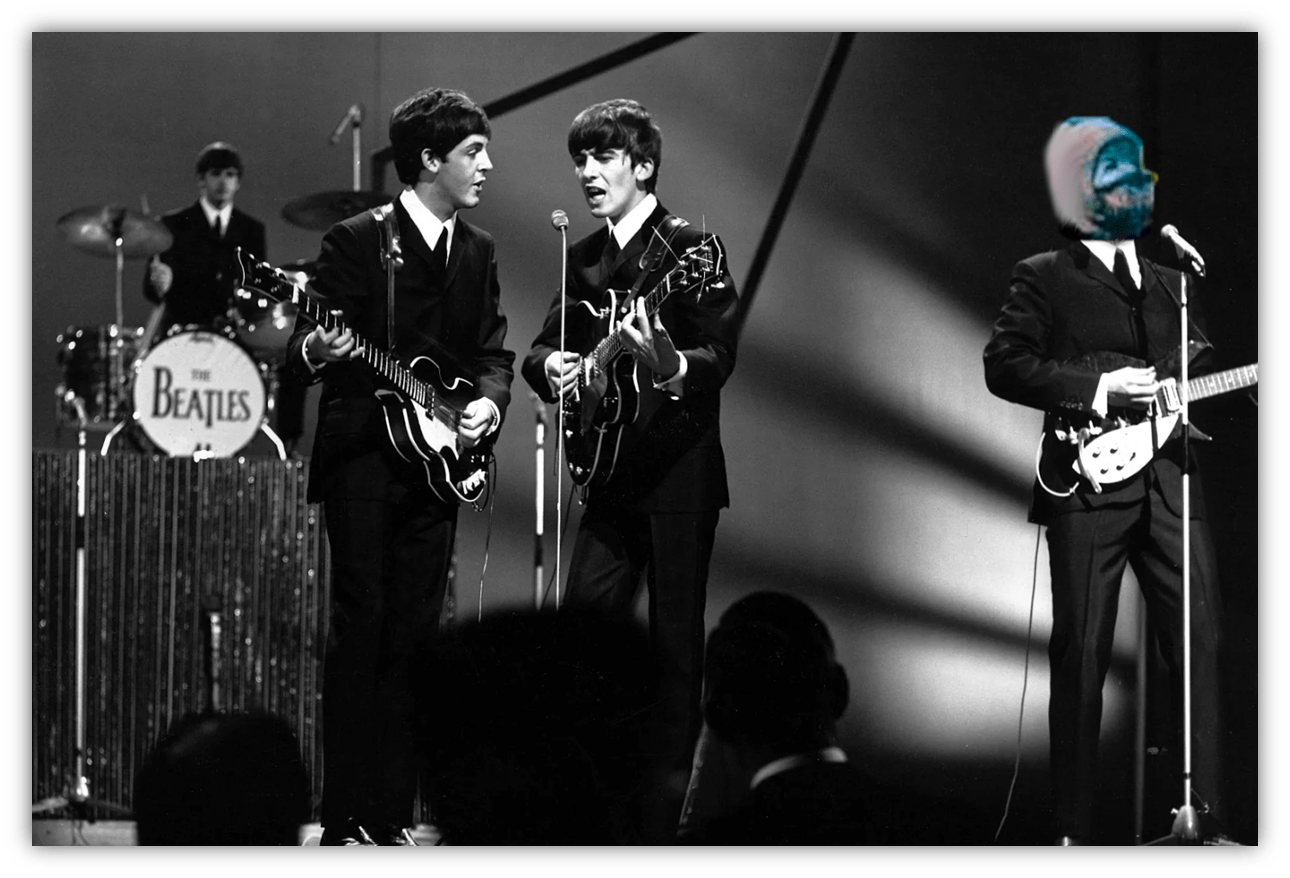Its been said here before:
The British charts are weird. Which has been true of the singles chart.
The albums chart on the other hand? I’ve been looking at the early years, tracing the history of the #1 albums and there wasn’t much weirdness going on. There wasn’t much of anything going on – but that’s what makes it so fascinating 60 – 70 years on.
Back in the early days, it was musicals that ruled the charts.
The UK album chart launched in July 1956 with Frank Sinatra.

His Songs For Swinging Lovers taking the inaugural accolade.
Frank was soon upstaged by Carousel… followed by Oklahoma!… followed by The King And I.
Between October ’56 and March ’58, Yul, Deborah and company spent 48 weeks in pole position.

Sinatra, now back with This Is Sinatra gave them a good run for their money. In early 1957, the two albums swapped places seven times, but in the end: the soundtrack saw him off.
Unlike the singles chart, Rock and Roll made little headway.
Understandably so, given that albums were much more prohibitively priced for teenagers. Bill Haley did have a brief foray on top. But it was Elvis who had the biggest presence. Even so, his album success paled compared to his singles.

He would get a boost thanks to his own film soundtracks as Loving You, King Creole, G.I. Blues and Blue Hawaii all took turns at #1 between 1957 and 1962.
Frank had one more crack at it in late ’57 with A Swingin’ Affair before the soundtracks took an iron grip on the chart.
It wasn’t just iconic musicals that held sway.

The Duke Wore Jeans was a Tommy Steele vehicle, long since forgotten but it took a short turn at the top.
That made way for the far more memorable My Fair Lady which had a 19 week run at Number 1.

But that was nothing compared to what was on its way:
South Pacific ascended to #1 on 8th November 1958 and remained there until 12th March 1960.

That’s 70 weeks. Its a good job there wasn’t a chart countdown, they may have struggled for enthusiasm once they got past a year.
Unsurprisingly that’s the longest unbroken streak in chart history. It was far from done, either.
In total, South Pacific spent 114 weeks on top of the chart in nine separate runs – also a record.

Its last week coming in September 1961, just shy of three years since its first week. If that’s not impressive enough, it recorded a full year’s worth of weeks at #2.
The album that got in the way of that initial 70 week run? One that no one would ever guess now:
The Explosive Freddy Cannon.

An adjective that doesn’t befit his chart stats.
His number one album riding on the back of his only two top 20 singles. Wikipedia reckons that his unlikely week at the top was due to heavily discounting the price. It seems as likely an explanation as any.
With South Pacific holding down top spot for 45 weeks of 1960, it left a small gap for Freddy and two other non soundtracks to get in on the act. One of those predictable; Elvis. The other, even more forgotten in time:

101 Strings:
A German easy listening orchestra who very much adhere to the phrase, “of their time.” Between 1957 and 1981 they recorded over 150 albums of easy listening fare and are claimed to have sold 50m copies.
They achieved six UK charting albums, Down Drury Lane To Memory Lane being their sole chart topper.

Another seemingly unlikely fact: the last two of those charting albums came in the 1980s.
Down Drury Lane To Memory Lane features a range of contemporary and older songs.
Some of them, such as “Some Enchanted Evening” are standards from the chart topping musicals, so its ascendancy can be seen as entirely in keeping with the soundtracks it interrupted.

Into 1961 with South Pacific winding down, it was Elvis’ G.I. Blues that was the standard bearer, spending 23 weeks at #1. The act in second place for weeks at the top in 1961 really does define “of its time.”*
* Not in a good way.
It was also the first example of TV muscling in on the territory of the big screen. The title tells it all:

The Black And White Minstrel Show.
Yes, they were in blackface. It aired on prime time BBC One from 1958 to 1978. Troupes of American minstrel performers had toured Britain in the 19th century, inspiring locals to follow their lead. This legacy transferred to early TV broadcasting becoming a ratings winner.

A string of albums were released through the 60s to capitalise on its success. The first three topped the album chart in 1961/62.
Their debut album is reportedly the first to sell 100,000 copies in the UK – a statistic which shows the paucity of album sales at the time. Despite South Pacific’s 114 weeks at #1, the minstrels swept past it to that sales figure.
Two other homegrown acts also topped the album chart in 1961 which pointed to the future rather than the past.
The Shadows had their own chart topper and quickly followed it as backing band to Cliff Richard.
Cliff was our answer to Elvis, starting off as a rock n’ roller before quickly moving into more anodyne fare and trying his hand in the movies.

Accompanied by the Shadows, his first #1 album was a standalone set but his next two were soundtracks to The Young Ones and Summer Holiday.
Once South Pacific relinquished its hold, the rest of the 1961 and 1962 were a revolving cast at the top of the Minstrels, Cliff, The Shadows, Elvis and what looked to be the final throes of the non star vehicle soundtrack: West Side Story.

That rose to the top on seven separate occasions for a total of 13 weeks.
Cliff & The Shadows spent Spring 1963 atop the charts with the not quite seasonally aligned Summer Holiday soundtrack, in which the boys take a red London double decker bus across Europe to Athens, in a now quaint vision of youth not quite gone wild.
On 11th May 1963 everything changed. Please Please Me rose to #1 and stayed there for 30 weeks.

To be knocked off by With The Beatles for a further 21 weeks.
The Beatles didn’t quite achieve South Pacific levels of domination thanks to The Rolling Stones self titled debut interrupting them for a 12 week spell in 1964. Besides that one-off demotion, The Beatles’ first four albums enjoyed 79 weeks at the summit from May 1963 to February 1965.
Only three albums topped the chart in 1964; The Rolling Stones, A Hard Day’s Night and Beatles For Sale.

There was a little more diversity in 1965 as Rolling Stones No. 2 and Beatles For Sale swapped top spot between them through to May. At which point Bob Dylan got a week each with The Freewheelin’ Bob Dylan and Bringing It All Back Home.

It seemed that youth had won. Nothing would be the same again. Except – there would be one more soundtracking behemoth.
The Sound Of Music took over from Bob in June 1965, for an initial 10 week run.
At which point The Beatles hit back with Help! . The Sound Of Music lay in wait for Beatlemania to subside with Help! managing nine weeks at #1. TSOM resumed top spot for another 10 weeks…

…By which time the seemingly insane work and release schedule of The Beatles churned out Rubber Soul.
And when that completed its eight weeks at the top? History repeated itself once again. TSOM took over for another 10 weeks.
The Von Trapps and Julie Andrews were just getting started.
For a little variation, this time it was The Rolling Stones’ Aftermath that defeated the Nazis. They won the battle but not the war. TSOM came back again. Then it was The Beatles (Revolver) again.
The Beatles may have been breaking new ground, things were getting freakier and London was swinging. But the not too distant past wasn’t to be denied. TSOM overtook Revolver, this time for an 18 week spell.
By now it was February 1967 and a new challenger took up the reins:

The Monkees and More Of The Monkees were all the rage.
But TSOM kept swapping places with them at the top. The Monkees were seen off before Spring was out and The Beatles took up the cause again with Sgt Pepper. That held top spot for 23 weeks, but you couldn’t keep the Von Trapps down.
Sgt Pepper and TSOM spent November and December dueling it out and replacing each other at #1.
The spell would finally be broken in 1968. TSOM took another week at the end of January with Sgt Pepper yet again usurping it.
From this point on the top of the charts was no longer a closed shop. The album chart would be as keenly competitive as the singles chart.
13 different acts had #1 albums in 1968. By far the most in a single year.
The Sound Of Music managed one last gasp, though. Three years and five months after its first week at #1 it found its way back there in November for a final week. Over twelve separate spells it totaled 70 weeks atop the charts. It may not have matched South Pacific’s total, but it did it against far stiffer competition in a newly invigorated album chart.
Its ubiquity further emphasised:
- It also spent 70 weeks at #2
- And 232 weeks in the top 10.
The last of them in January 1971.
While on the surface, a youthquake was apparently changing popular entertainment forever in the late 60s, the reality was a lot more conservative.
Over in the US, there was a similarity in as much as an abundance of musical soundtracks claimed #1 spot. There was though, a greater diversity of acts and genres and a much quicker turnover at the top.

South Pacific and The Sound Of Music both topped the Billboard 200 but only for a handful of weeks each.
It was West Side Story that was the long running success.








Musicals were seeped deep into the culture here at the time. In many people’s minds, they pretty much define the 50s and early 60s. It’s interesting that it doesn’t reflect in the charts in the same way they dominated in the UK, but I think it’s harder here for one album to stay at #1 for a considerable amount of time. According to Wikipedia, the South Pacific soundtrack was #1 for 7 months here, not nearly as long as you guys, but still the 4th highest streak at #1 here ever. (The soundtrack for the stage production is 3rd. West Side Story has the 2nd longest)
101 Strings was successful here too, though I don’t know its chart impact. I can’t imagine it compared to British charts. I can say that when I look for vinyl at thrift stores, there are always at least a few those albums to be found. Lots of musical soundtracks too.
My Fair Lady will always have a special place in my heart because it was the musical we did at our school my senior year and I was in the pit orchestra for it, playing clarinet. I still remember my band friends and I walking around school singing those songs.
Compared to over the pond, Cliff Richard’s relative lack of popularity here is well-documented, but he does have a 70s hit that I will be playing a lot come Halloween. If the timing is right, I will try to sing it at karaoke as well.
Hey! I played clarinet in the pit crew! The two musicals I did were The Music Man (which I love to this day) and 42nd St, which surprisingly I don’t remember that well. Pit crew was my favorite band experience I had, but holy cow was the music ever challenging!
Ah, 101 Strings. Who doesn’t remember Trumpets a Go-Go, Vol 2? Or 101 Strings Goes Disco? Or Astro-Sounds from Beyond the Year 2000?Those albums are more like periodical magazines…if you were in the mood for easy listening, you didn’t really care which album you bought, did you? You just bought whichever of their 150 releases was on sale at the time. They are very easy to find in bargain bins and used record stores. I had thought for a moment that it might be a fun group to collect, just for the heck of it, but it’s probably good that I didn’t.
I’d never heard of 101 Strings til last week. Seems that everyone else is ahead of me on this one.
Astro-Sounds from Beyond the Year 2000 is an intriguing title. I’m not convinced it can live up to the name.
I loved being in pit too, Link, but yes, it could be challenging. The director’s wife was the other clarinetist and she berated me frequently for being out of tune or for flubbing parts. Still a blast.
I’m assuming the Cliff song is Devil Woman. One aspect of Cliff that gets a lot of attention here is his Christian faith. Not sure its something that would mark him out for particular attention in the US but here its relatively unusual to be
Apparently he was reluctant to record Devil Woman originally with accounts that it conflicted with his faith and the lyrics were rewritten to act as a warning.
Yes, indeed.
And yes, his Christian faith was well-known, at least in my circles. Even with the revised lyrics, Christians still criticized him for singing it, and he had to defend the song by explaining it was a cautionary tale, like you said.
“Devil Woman” sounds reborn in I, Tonya.
It describes the mother, initially, and then there is a transference when she tells her daughter: “Go skate.” It’s like watching Rosemary’s Baby on ice because the actress playing young Tonya looks four.
I’ll echo what rollerboogie said re: 101 Strings. My parents had several of their albums, though they’re now long gone via yard sales.
The Sound Of Music was the second movie I saw in a theater. Mary Poppins was the first and we had both soundtrack albums in the house. We didn’t have West Side Story or South Pacific but I knew about them and heard bits and piece in the wild. Maybe my parents’ friends had them.
Great analysis, JJ. Any idea if the faster turnover at the top of the charts in the US was simply due to it being a much larger country?
I think you’re on the right lines with the faster turnover being as a result of a larger country.
The initial UK singles and albums charts were drawn from a very small pool of retailers. Singles at least had a higher turnover as there was more choice whereas albums were much less abundant and due to price not as attractive a proposition. Soundtracks no doubt did well as they had the recognition factor of people already knowing all the songs from the cinema. Taking a punt on an album when you only knew a couple of songs would be for less enticing due to the cost.
What I remember most about seeing “The Sound of Music” in theaters (in re-release in the ’70s) was that it had an intermission! The only other movie I remember having an intermission was “Gone With the Wind.”
Interesting. I never saw it in the theater.
Lawrence of Arabia had an intermission as well.
Yes! I had to ask my mother what that big word on the screen starting with “I” meant.
Monty Python and the Holy Grail had an intermission.
I rewatched Help! this week and that has an intermission. A very short one. Not nearly enough time to restock on popcorn or ice cream
Re: long stays at no. 1
Who are the people who’re aware of the immense popularity of TSOM before deciding, ‘yup, the movie’s been out for six years and the soundtrack’s been in the top 10 for eleventy hundred weeks, it’s time I pick up that sucker!’ And there are legions of them, even in ’71. Boggles the mind.
I’ve thought the same thing about singles in the days of physical sales but the way you put it made me laugh. We had Bryan Adams at #1 for 16 weeks with (Everything I Do) I Don’t It For You. Who is it that after four months of wall to wall radio play finally decides that’s the song for me? We’re they just worn down and felt they were missing out?
TSOM takes that to a whole other level.
It stayed in the charts here for 238 weeks. I think a new generation of kids kept it popular.
I was a baby when it came out, but I came to love it as a 6 year old.
My sister and I had an album that had the dialog and music, so we knew the whole movie by heart before we ever saw it.
I love musicals. I’ve even seen The Duke Wore Jeans, even though I’m an American and had no idea who Tommy Steele was. I rented the video as one of the few remaining musicals Video Warehouse had that I hadn’t seen before.
I’m impressed to find someone that has even heard of The Duke Wore Jeans let alone seen it. I know Tommy Steele appeared on Broadway in the mid 60s in Half A Sixpence, starred in the film version and made a handful of US films in the mid to late 60s but wasn’t sure how well known he is.
I see he was also in Finian’s Rainbow which sounds like some kind of fever dream going by the fact Francis Ford Coppola directed Tommy, Fred Astaire and Petula Clark in a story of stealing a leprechaun’s pot of gold.
That was a popular movie here. I am pretty sure I saw it as a kid.
The one thing that could have made it an even odder proposition is that I was confusing it with the early Sean Connery leprechaun film; Darby O’Gill And The Little People. Throwing Connery into the mix would have been too much.
I remember that one too, but not sure if I saw it.
Great blog as always, JJ! Here’s an American take on some of these, courtesy of my Joel Whitburn’s Top Pop Albums 1955-2001 book.
The original cast album of My Fair Lady is still one of the longest charting albums ever, with 480 weeks in Billboard starting in 1956, when it was at #1 for 15 weeks (some of its run overlaps with the release of the movie in 1964). Incidentally, the picture here is the soundtrack, as Audrey Hepburn took over the role in the movie over the Broadway original, Julie Andrews (who just turned 90-wow!).
The soundtrack to Oklahoma also had a spectacular run of 305 weeks, 4 of them at #1 in 1956. And the soundtrack to The King and I, though it had only 1 week at #1 in 1956, stayed on the chart for an impressive 277 weeks, putting it in the top 20 of all time and tying a chart run with, of all things, Tennessee Ernie Ford’s sprirtual Hymns album, which could only peak at #2 for 3 weeks in 1957 during its 277-week run.
The Sound of Music original cast album is just one shy of them both at 276 weeks. It made #1 for 16 weeks in 1960. As for its soundtrack, it did very well too at 233 weeks including 2 weeks at #1 in 1965.
The West Side Story soundtrack still holds the record for most weeks at #1 with 54, but its overall chart run was shorter than the rest here at 198 weeks.
Perhaps the most impressive numbers for these albums is their time in the top 10, all among the few ever that spent more than 100 weeks in the top 10. My Fair Lady was there 173 weeks, Oklahoma 116, The King and I 178, The Sound of Music original cast 105, The Sound of Music soundtrack 109 and West Side Story 106.
Finally, 101 Strings had only 4 albums chart from 1959-1961, but yeah, they were all over the place in cutout bins and resale stores throughout the 20th century. Their biggest success by far was The Sound of Spain, which came out in 1959 and made the top 10 in 1960 during a run of 58 weeks.
That is some quality information. Thanks, Ozmoe.
Thanks for the extra detail Ozmoe!
Love the stats. Musicals were a big deal in both countries then but something about the make up of the UK chart led to some extra lengthy stints at #1.
I never encountered a Von Trapp family CD at Tower Records. I thought they were fictional. I learned they were real people during the lockdown. Pink Martini invited Charmaine Carr to perform “Edelweiss” in 2015. She was seventy-two at the time. It’s hard not to be moved. Well, that’s just me. I’m not expecting everybody to have the same reaction.
“The Lonely Goatherd” slaps.
I always cry like a baby during Edelweiss